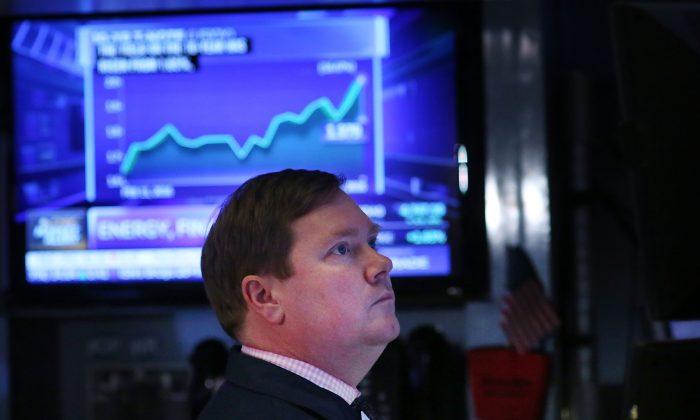And who can blame him for this feeling? The market fundamentals do resemble Japan in 1989 or the United States in 1999. GDP growth is healthy, unemployment is down, and corporate earnings are solid.
However, that’s as good as it gets in terms of fundamentals. Both stocks and bonds are very expensive relative to historical valuations, and both companies and the government are drowning in debt, one of the reasons rates have been creeping up since January.
Central Bank Tightening
Why were the Bank of Japan and the Greenspan Fed so persistent in raising rates back then, and why is it very likely the Powell Fed will continue to hike in 2018 despite market stress? All of them were worried about irrational exuberance and financial market bubbles as well as consumer price inflation.The reason the Fed got away with keeping rates too low for too long since 2009 is due to the fact that consumer price inflation never caught on, even as asset price inflation took hold in the stock, bond, and real estate markets.
Consumer price inflation kicks in when wage inflation starts to rise. Thanks to millions of people outside of the labor force and not counted in the headline unemployment figure, average hourly earnings have been stagnant for most of the last decade—until December of 2017. The data released on Feb. 2 shows hourly earnings spiked up 2.9 percent, the largest increase since 2009.
Market inflation expectations, together with rates, have been creeping up since January, which will keep the Fed on the back foot. And while the Fed generally doesn’t want the market to decline too fast and too far, they generally do not mind a 20 percent correction, especially when they believe the market is ahead of itself anyway.
Rising Rates
Irrespective of the Fed’s course to raise rates another one or two times this year, Treasury yields are rising because of inflation expectations, and because President Trump’s tax cuts and budget are going to see the Federal government bleed red ink all through 2018 and 2019.White House budget director Mick Mulvaney hopes this can be avoided if growth picks up in the long-term.
“If we can keep the economy humming and generate more money for you and me and for everybody else, then government takes in more money and that’s how we hope to be able to keep the debt under control,” Mulvaney told Fox News.
In the short-term, however, even he admits that new government debt issuance could lead to another spike in interest rates, if the deficit blows out to $1.2 trillion in 2019 as expected, due to additional spending on infrastructure and defense.
Technicals
From a technical perspective, this correction feels more like 1987 than 2001 because the market sold-off so quickly and without warning. The S&P 500 lost 11.8 percent in only 10 days before a significant relief rally.This sell-off is different from the market tops in 1999, 2007, 1987, and even the 20 percent drop in 2011 because the market experienced some drops and subsequent rallies before the final top and steep decline.
If Paul Tudor Jones and the technicals are right, and the current market action reflects 1989 Japan and 1999 United States, then we are in for a tough 2018. The Nikkei lost almost 50 percent of its value in 1990 after topping out early that year. The S&P 500 did better in 2000, only losing 20 percent after topping out in March.






Friends Read Free